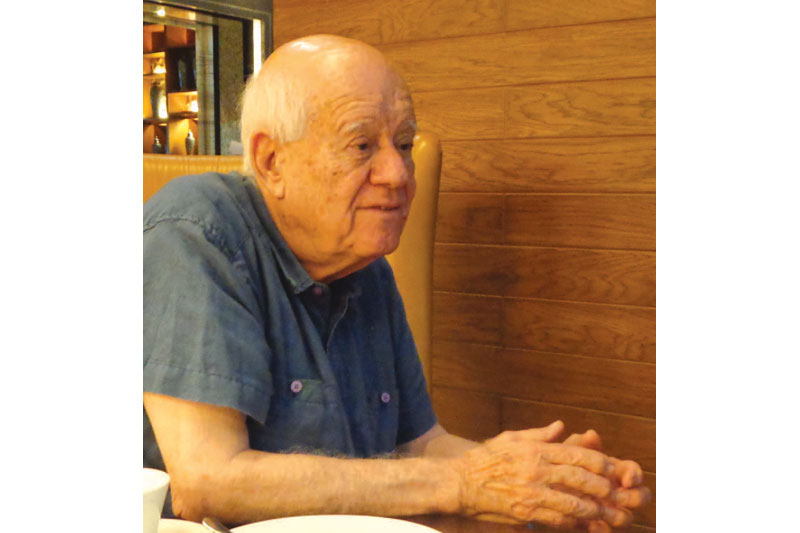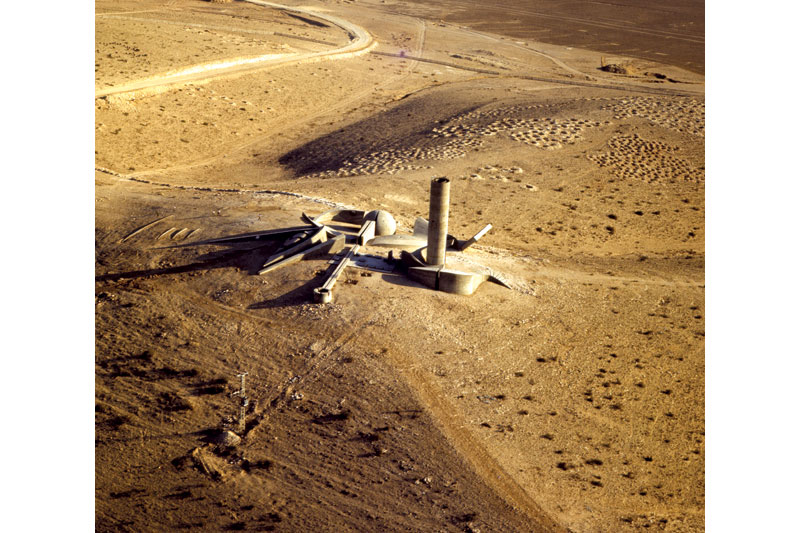Theory and Discourse
Narration of Space and Place | In Conversation with Dani Karavan
LA 43 |
|
| Landscape architect, Dani Karavan, acclaimed for his environmental sculptures and site specific memorials and monuments, talks to Urmila Rajadhyaksha about the evolution of his work, how each site has a history of memories and the need to draw inspiration for art in design from the site itself. |
|
 |
|
With a legacy of a family of landscape architects in Israel, how has your family's and the country's background shaped your engagement with nature?
At the age of four years, I was living in a little house built by my father. I grew up in a warm family. Childhood there was paradise! Running barefoot on the sand was a pastime as I watched people making cement concrete blocks. A safe society living with doors open, with views to the mountains and sunrise clearly seen, Rabin Square now, was then a swamp, a 'bitsa' which disappeared in the summer and reappeared when the rains came in the winter.
I never thought I would follow my father. Born dyslexic, I was considered lazy and punished a lot but grew up well because of my mother who believed in me. I wanted to be a musician but started studying painting instead.
And, as a young artist, I asked my father why he did not design gardens like the French and the Baroque to which he replied that it was important at that time to bring back nature. He helped me with the choice of plants to use in my projects. In the Negev Monument where water was scarce he made a choice of trees that should be used. He always kept in mind the need of water in Israeli landscape.
I was awarded the work of the Court House in Tel Aviv where my work had a steel sculpture. This was a prestigious state commission which had been awarded to me fairly early in life.
What has been the path of evolution of your works over the past five decades? How have they evolved?
After my work at the Court House I was invited to create the monument honouring the Palmach's Negev Brigade at Be'er Sheva in the Negev, which I eventually did. The Negev Monument is now over fifty years old. It is about memory but also a place for people to come and enjoy. Be'er Sheva, in the Bible, was where Abraham had lived. The land of Seven Wells. We chose the site, which is like an entrance to Be'er Sheva. It had a tower to go up and see the surroundings. I find in my work that a lot of children like to come. Landscape then meant planting plants, and I believed in breaking the convention. It was beautiful to work with a sun drawing a line through an opening, changing with time. The wind whistling through the pipes in the tower, creating sounds. I understood that I should be open to listen to nature... I wanted to provoke people to go in, on and through and to touch the sculpture. People were scandalized..." they're walking all over your sculpture". I said, "Beautiful!"
The Negev Monument was a defining moment in my work. Some more theatre art design followed. The choreographer Martha Graham of the Martha Graham Dance Company New York visited Israel and was impressed with my work which gave me a chance to work for their show which premiered in New York. This was followed by concrete and bas-reliefs at the Weizmann Institute. When I was commissioned for a wall at the Knesset, the Israeli parliament, there was a lot of criticism, as I was considered a set designer but it happened because the four architects working on it agreed on commissioning me.
In my young years looking for work, I worked for exhibitions and I won a prize for my design for the pavilions of the Ministry of Development in the exhibition celebrating the tenth anniversary of Israel. My contemporaries criticized me for spending a lot of money, but I could not really think of money, only of good work. In 1976, I was invited to design an installation at the Israel Pavilion at the Venice Biennale. This and the Jerusalem City of Peace Sculpture at the entrance of the garden of the Venice Biennale led to success and several European and World Commissions especially the Axe Majeurein in France and the Ma'alot in Germany.
I was invited for the Documenta 6 at Kassel. This was an honour and at the same time very difficult for me because till then I didn't go to Germany, but it was important to show truth.
|
|


|
|

|
|
|
|
|